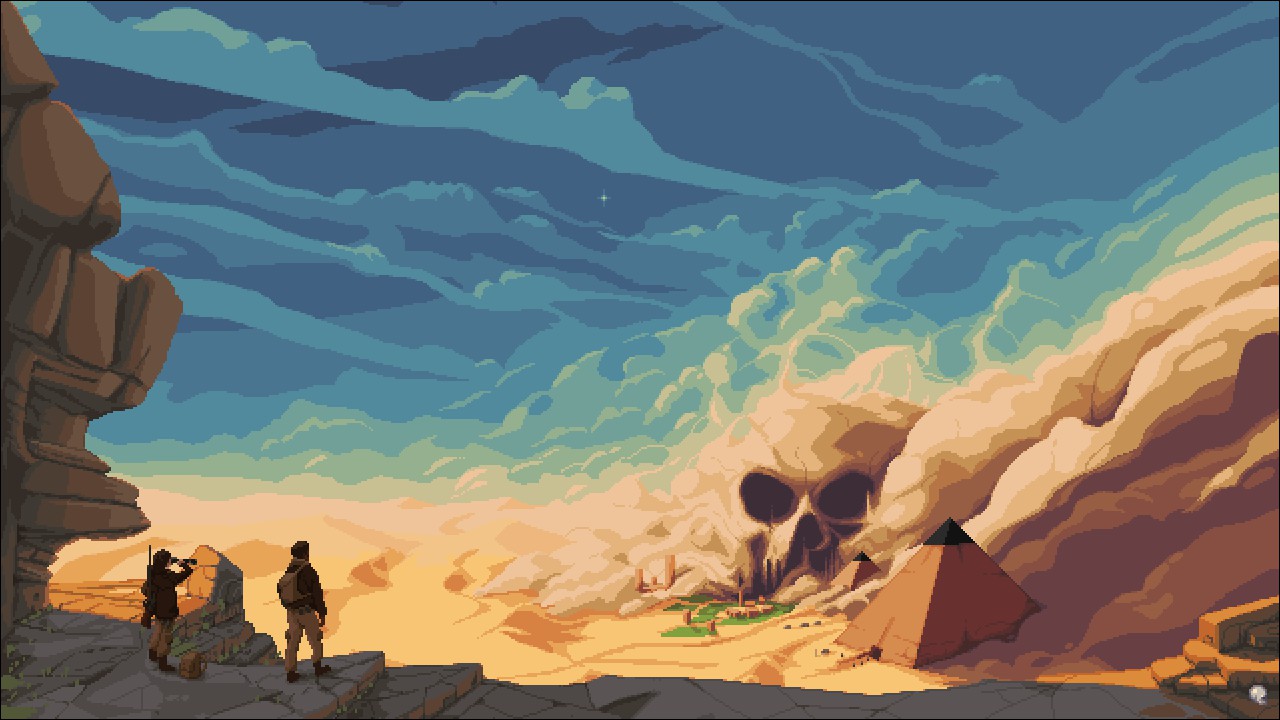Pathway Review
Leading the way.

A civil war poet, a vicar and a steppe huntress walk into a bar. Somehow Robotality have managed to gather every pulp trope into one place and make an amazingly rich, squad-based roguelike set in the fictitious, early 1900s age of adventure. I really loathe doing hot comparisons, but Pathway is FTL meets Indiana Jones with a sprinkling of Jagged Alliance, and I cannot stop thinking about it.
Readers already aware of Robotality’s library of games will already be aware of the tight, grid-based, hero-based gameplay that they have been slowly refining over the years. Rather than conventional classes, each of their games have players as personality-driven archetypes who permeate and populate the world. In Pathway, these heroes are all larger-than-life stereotypes carved straight out of 1960s fiction: The Russian nurse, deadly with a pistol; The war poet with a knack for explosives and hatred for Nazis; the Vatican vicar who fights evil with both bullets and crucifixes.

All in all there are 16 characters, with many of them having prerequisites to unlock. Some are as simple as racking up ‘x’ Nazi or zombie kills, another requires the campaign to be finished with only women as starting characters. None of the challenges are particularly hard, each character is a refined specialist, and once you know how to use them and their abilities you’ll easily unlock characters on most campaign attempts.
Pathway comes with five campaigns, each longer than the previous. The first is a romp through the desert to save a friend who was kidnapped by the Nazis. It’s a single map campaign, with about 13-14 tiles of travel the shortest route to the objective. Your adventurers normally start with a default amount of ammo and fuel, although you can add more while prepping before each campaign due to the way that items and other elements carry over between attempts. Later campaigns have multiple maps and pit you against zombies and cultists in alternation to the Nazis.

Each of these tiles, or pips, trigger an event when you arrive. Some of these events are just telling you that you’re where you set out for; others trigger combat, trading or resting; others give you a choice of options. Frequently among the options are special options which depend on the traits of the team you’ve formed. Daredevils, for instance, will jump from vehicle to vehicle in pursuit. They might also callously act as a distraction while other teammates sneak into a base.
So, ‘Piranha’ Pereira, the Brazillian steamboat captain, and Rose Sheffield, American adventuress, are both felled. The campaign ends and you’re back at the main menu. You can start up the same campaign again, with the tiles and events turned around; the only thing is that your knocked out characters are now hospitalised. Your items, however, and the experience levels of the characters, persist. Your truck’s contents do too, so before you start your next trip out you can take the chance to upgrade your adventurers with new weapons and armour. Persistence in roguelikes is nothing new, but having such a dense roster full of unique characters makes it feel great.

I suppose we should get down to discussing the combat. It’s simple. Each character can move (or use an ability) and take an action. In addition to health, each character has an armour statistic based on their equipment and a bravery tracker. Bravery points are awarded for kills, dodges and certain attacks, and these are used up when you want to use special abilities. Special abilities include cutting people to bleed when stabbing, a cone-based Overwatch-style ability, a wider shotgun spread, and more.
You are outnumbered in almost every battle, even when you have a team of four. This means that you’ll need to use cover. Full cover pretty much blocks all but the luckiest shot, half cover halves the chance to hit. There’s also accuracy percentage and range to take into consideration, but if you’ve been flanked or don’t have cover between you and your assailant then you can basically assume you are going to get hit.

When it comes down to it, as long as you are replacing weapons as soon as you find rarer ones, you’ll be killing most enemies in one hit. This makes Pathway a game about range. If you can stay out of range of enemies then you can normally close the gap they’ve left in their turn. This does get tricky when it comes to internal areas, and also when enemy area of attack units appear.
Characters do level up once they’ve gained enough experience. Each character is different and starts starkly different to one another, be this through their statistics, starting equipment, or their perks and skills. In Pathway people can’t just pick up a weapon and use it; they need to be adept. The same applies for armour types as well.

What is there left to talk about? The five campaigns give over 20 hours of content to the competent. If it is too challenging for you then there are sliders to alter enemy density/difficulty, starting fuel and starting ammo. The character skill trees are all unique. Finally, the music is amazing and sounds straight out of an Indiana Jones movie.
All of my initial complaints about Pathway disappeared as I continued playing, and my only real concern now is that they might not make more campaigns or characters to add to the game.
[Reviewed on PC]
